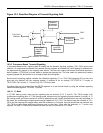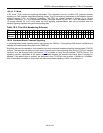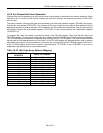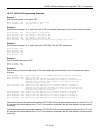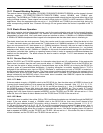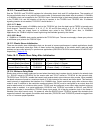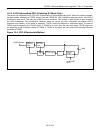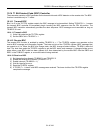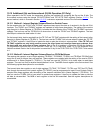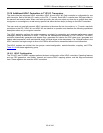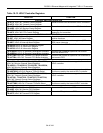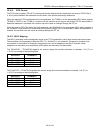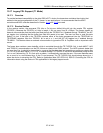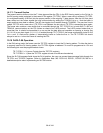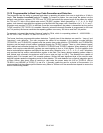
DS33R11 Ethernet Mapper with Integrated T1/E1/J1 Transceiver
92 of 344
10.15 Additional (Sa) and International (Si) Bit Operation (E1 Only)
When operated in the E1 mode, the transceiver provides two methods for accessing the Sa and the Si bits. The
first method involves using the internal TR.RAF/TR.RNAF and TR.TAF/TR.TNAF registers (Section
10.15.1). The
second method, which is covered in Section
10.15.2, involves an expanded version of the first method.
10.15.1 Method 1: Internal Register Scheme Based on Double-Frame
On the receive side, the TR.RAF and TR.RNAF registers always report the data as it received in the Sa and Si bit
locations. The TR.RAF and TR.RNAF registers are updated on align-frame boundaries. The setting of the receive
align frame bit in Status Register 4 (TR.SR4.0) indicates that the contents of the TR.RAF and TR.RNAF have been
updated. The host can use the TR.SR4.0 bit to know when to read the TR.RAF and TR.RNAF registers. The host
has 250μs to retrieve the data before it is lost.
On the transmit side, data is sampled from the TR.TAF and TR.TNAF registers with the setting of the transmit align
frame bit in Status Register 4 (TR.SR4.3). The host can use the TR.SR4.3 bit to know when to update the TR.TAF
and TR.TNAF registers. It has 250μs to update the data or else the old data is retransmitted. If the TR.TAF and
TR.TNAF registers are only being used to source the align frame and nonalign frame-sync patterns, then
the host need only write once to these registers. Data in the Si bit position is overwritten if either the framer is
(1) programmed to source the Si bits from the TSERI pin, (2) in the CRC4 mode, or (3) has automatic E-bit
insertion enabled. Data in the Sa bit position is overwritten if any of the TR.E1TCR2.3 to TR.E1TCR2.7 bits are set
to 1.
10.15.2 Method 2: Internal Register Scheme Based on CRC4 Multiframe
The receive side contains a set of eight registers (TR.RSiAF, TR.RSiNAF, TR.RRA, and TR.RSa4–TR.RSa8) that
report the Si and Sa bits as they are received. These registers are updated with the setting of the receive CRC4
multiframe bit in Status Register 2 (TR.SR4.1). The host can use the TR.SR4.1 bit to know when to read these
registers. The user has 2ms to retrieve the data before it is lost. The MSB of each register is the first received. See
the following register descriptions for more details.
The transmit side also contains a set of eight registers (TR.TSiAF, TR.TSiNAF, TR.TRA, and TR.TSa4–TR.TSa8)
that, through the transmit Sa bit control register (TR.TSACR), can be programmed to insert Si and Sa data. Data is
sampled from these registers with the setting of the transmit multiframe bit in Status Register 2 (TR.SR4.4). The
host can use the TR.SR4.4 bit to know when to update these registers. It has 2ms to update the data or else the
old data is retransmitted. The MSB of each register is the first bit transmitted. See the register descriptions for
more details.



